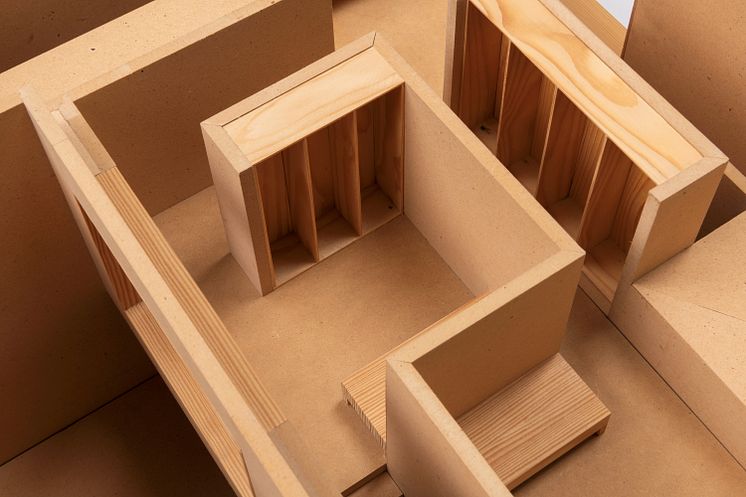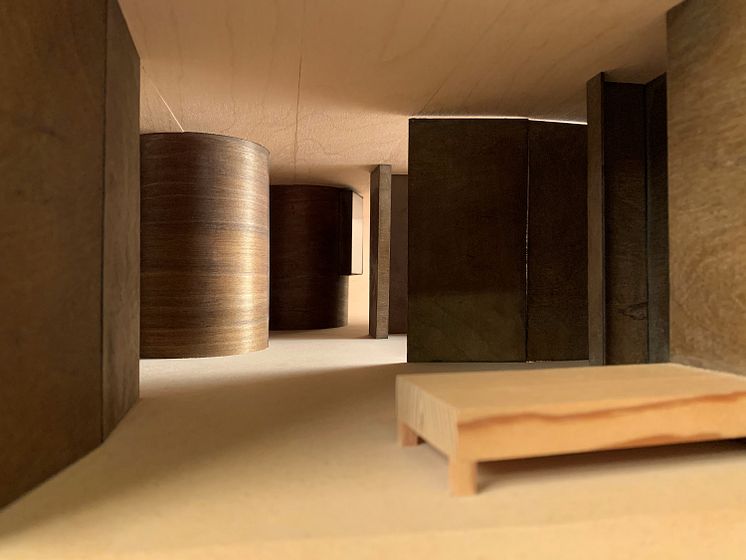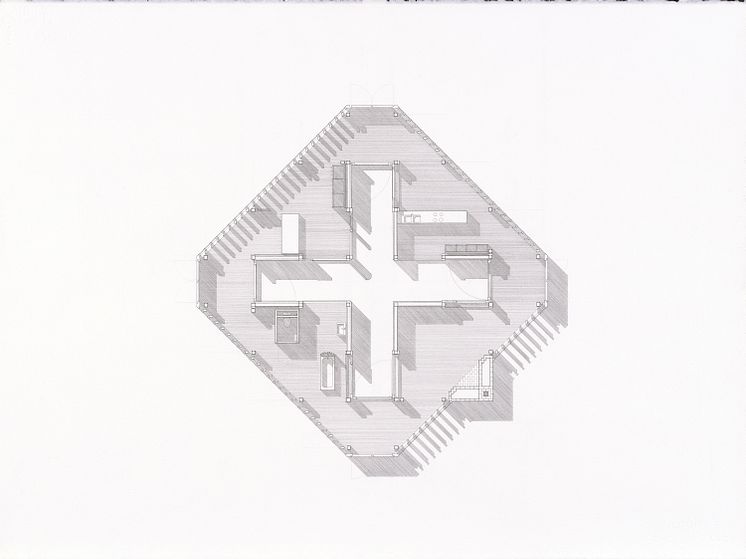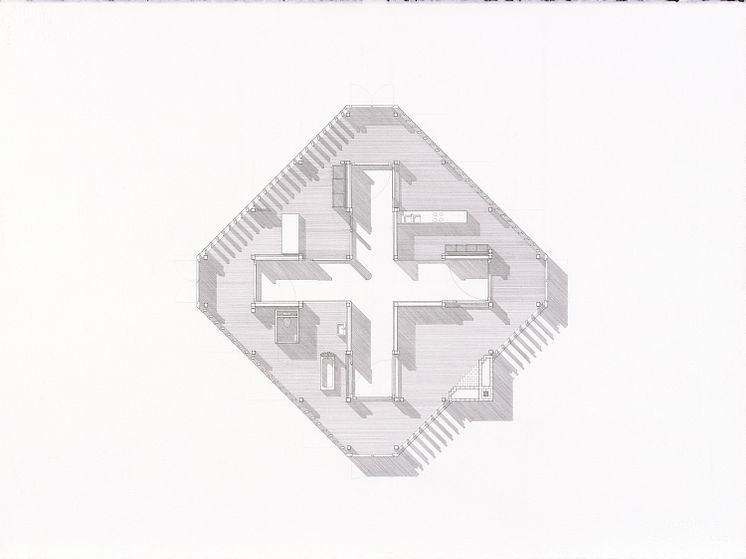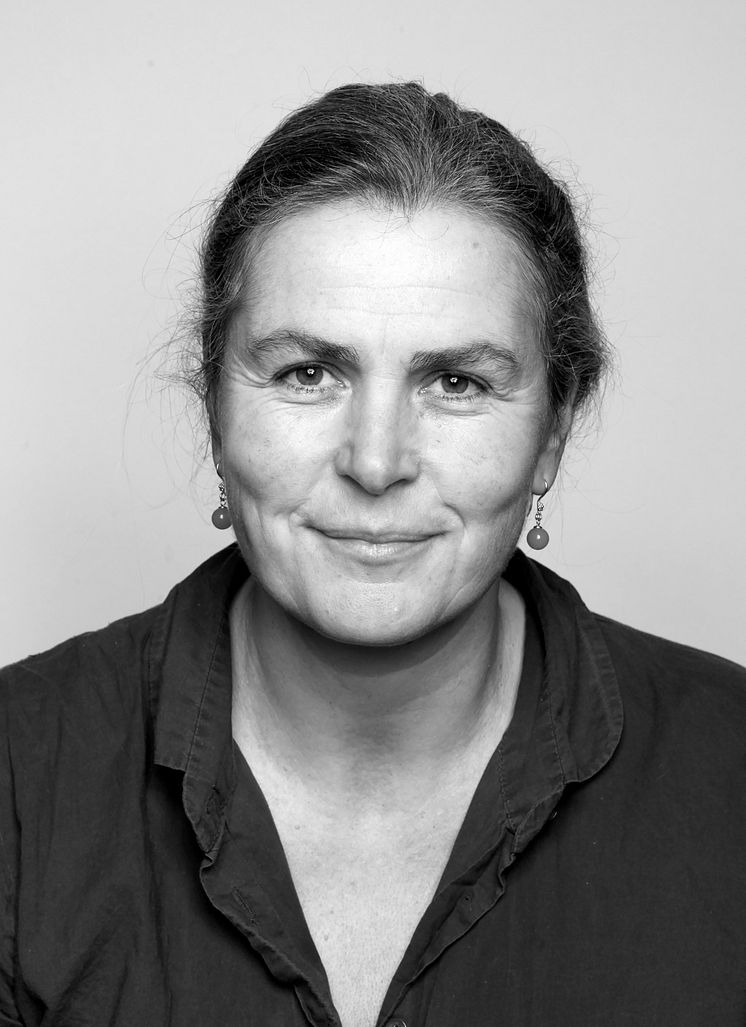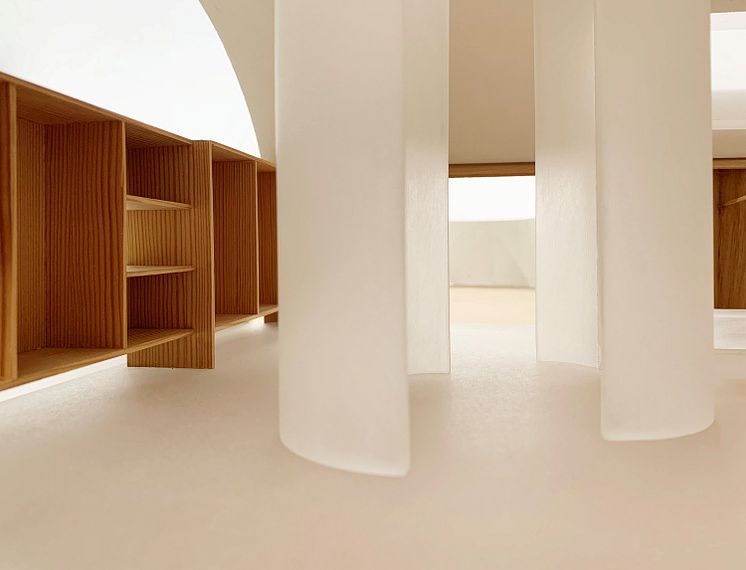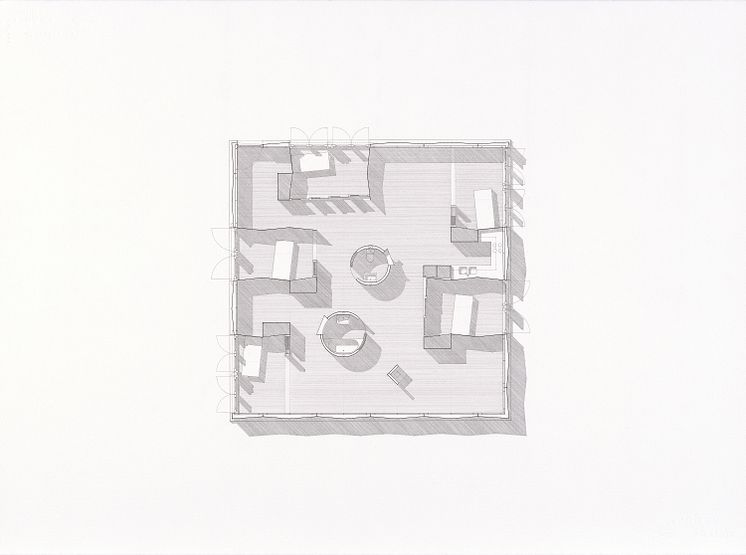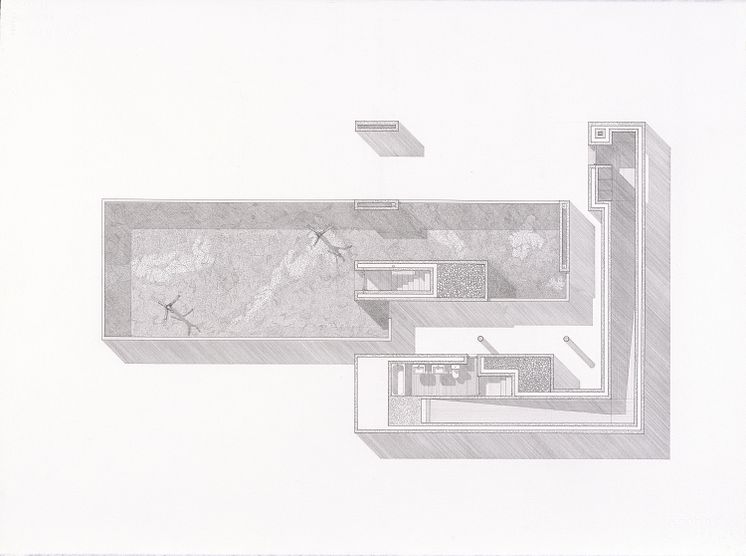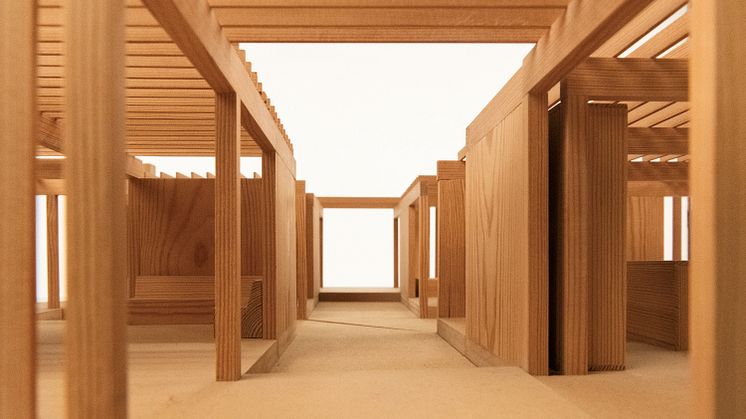
Press release -
Four houses. Four Women.
Architecture by Beate Hølmebakk based on characters from literature
Since May this year, a unique exhibition has been open to visitors at the National Museum – Architecture in Oslo. On display are designs for four houses by one of Norway’s leading architects, Beate Hølmebakk. The projects are not intended to be built; they are ‘paper projects’ that exist only as drawings and models. This exhibition is the first time that these important theoretical works have gone on display at the National Museum.
The Virginia series is Beate Hølmebakk’s interpretation of four female characters from literature, expressed through architecture. The four houses are not designed for specific inhabitants, but are based on recognizable female character types: the young woman, the mother, the housewife, and the widow. The meticulous pencil and pen-and-ink drawings are masterpieces within the genre of paper architecture and were purchased by the National Museum in 2020.
The title of the work refers to Virginia Woolf’s 1929 essay, A Room of One’s Own,which discusses a woman’s possibilities for being an artist. Woolf asserts that a woman must have a certain amount of money and her own room if she is to be an artist.
“Experiencing architecture is about being inside buildings, being inside spaces, sensing them with your whole body,” says Hølmebakk. “But there are also some aspects of the discipline that have to do with ideas. Imagining something that doesn’t exist is something that architects do all the time. You must be capable of creating a separate space for yourself, or a separate field. You must clear away some topics and take control of some other topics to take control of the situation and make what you want of it.”
Hølmebakk began work on the series in the late 1980s. At the time she was a newly qualified architect on a quest for architectural freedom, which she found in a personal project unconstrained by the inflexible processes and structures of an architecture practice. Woolf’s essay gave her the idea of designing houses based on female characters in literature.
“The starting point for each project was an interpretation of the fictitious lived worlds of the selected literary characters. When I read the books, at the time when the houses were designed, I formed some opinions on what the books were about. What is it that this writer is trying to tell us? And what is the story here?” explains Hølmebakk, during a conversation about the project.
Together, the houses form an architectonic frieze of life, with the drawings and models exploring different situations. Can architectural drawings express states of mind? Can an imagined house convey what it is like to be young? What it is like to be dependent on another person, to live with them, or to lose them? Through the connections and barriers between the different spaces, the series comprises a form of psychological architecture.
“Something that all the female characters in this series have in common is that they allow for ambiguous interpretations,” notes Hølmebakk, in conversation about the literary origins of the series and how it relates to society today. “They represent somewhat complex personalities. Things aren’t only black and white. They are characters who are affected by the world around them – or by situations they live in. They have a relationship with other people or with the world around them that generates something to take hold of. It was extremely important for me to find something that was universally recognizable and that had something to do with the role of women and typical female situations.”
The practice of making architectural drawings of structures that are not intended to be built is known as ‘paper architecture’. When Hølmebakk lived in New York in the 1980s, this tradition was flourishing. Both John Hejduk, her tutor, and Raimund Abraham, for whom she would later work, experimented with architectural drawings as a conceptual and speculative medium in their own right.
As examples of paper architecture, the drawings in the Virginia series are realistic and relatively practical designs. Although the projects are fictional explorations of existential themes from the characters’ lives, the drawings are reminiscent of conventional building plans. They take into account the laws of nature and the properties of the specified materials. A different material is envisaged for each of the four projects: wood, concrete, steel, and brick. All the designs have been checked by the civil engineer Terje Orlien and in principle could be realized.
– Joakim Skajaa, the National Museum curator responsible for the exhibition, says that the recent acquisition of the Virginia series by Beate Hølmebakk represents an important addition to the National Museum’s architecture collection. Hølmebakk is one of the most important architects practising in Norway today, and her Virginia series, a conceptual paper work that both technically and conceptually expands how we think about architecture and architectural drawings, is unique in Norwegian architectural history.
The exhibition shows a selection of the drawings and three of the house models. “Our guiding principle when making this exhibition was to allow people to get close to the drawings and appreciate the fine details and craftmanship in the work. Apart from a short written introduction, we leave it up to the visitors to imagine the spaces and engage with the work,” says Skajaa.
The four projects and literary characters in the Virginia Series are:
House for a Young Woman, based on Veslemøy from Arne Garborg’s Haugtussa
House for a Mother and a Child based on Helene Alving from Henrik Ibsen’s Ghosts
House for a Housewife based on Ragnhild from Olav Duun’s Fellow Man
House for a Widow based on Lauren Hartke from Don DeLillo’s The Body Artist
The Virginia series was purchased by the National Museum in 2020. It consists of 23 drawings and four models, dated between 1995 and 2001. Selected items from the series are displayed in this exhibition.
Topics
The National Museum of Art, Architecture and Design opens in 2022. With its new building the National Museum will be the largest art museum in the Nordics. The collection contains 400,000 objects ranging from the antiquity to the present day and includes paintings, sculpture, drawings, textiles, furniture and architectural models.


